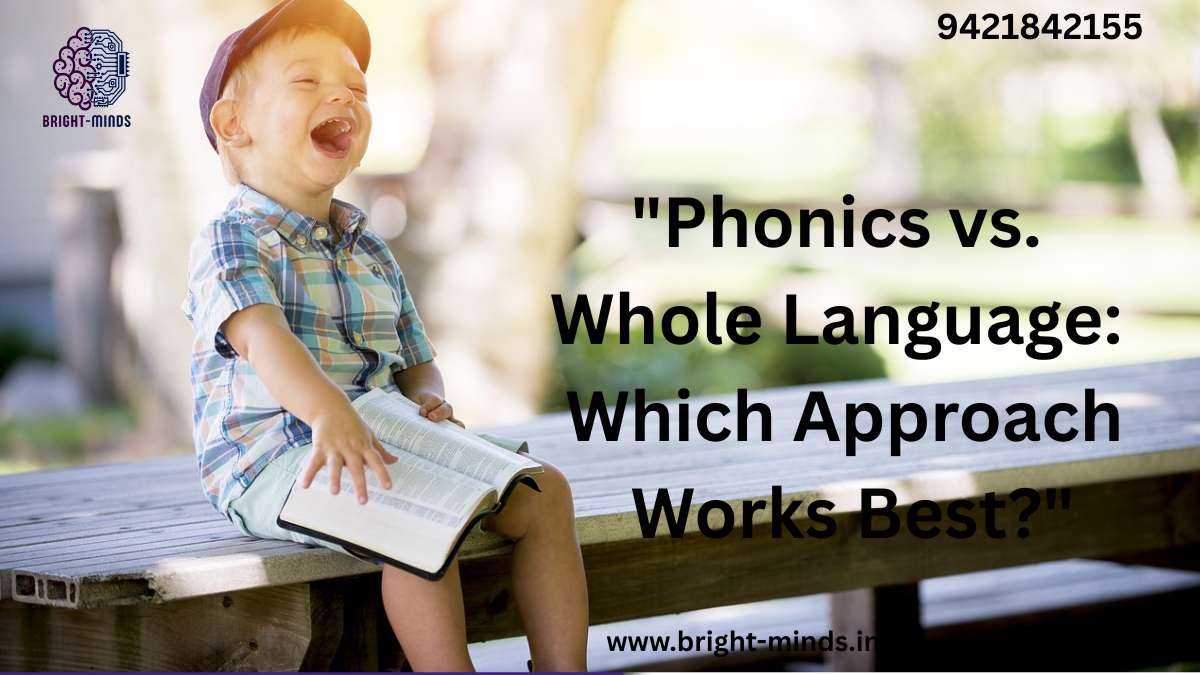When it comes to teaching children how to read, few debates have sparked as much passion and research as the “Phonics vs. Whole Language” discussion. Parents, teachers, and education leaders alike want the same thing—for children to become confident, lifelong readers.
But the question remains: Which method is more effective? Should we teach kids to “sound it out” (phonics) or immerse them in full texts and let them learn through context (whole language)?
If you’re a parent trying to support your child’s literacy journey, an educator navigating curriculum choices, or a professional exploring how early education affects long-term skills (including financial literacy), this blog will clarify the key differences, highlight real-world applications, and provide practical strategies to guide your next step.
📚 Understanding the Basics
🔤 What is Phonics?
Phonics is a method of teaching children to read by correlating sounds (phonemes) with letters or groups of letters (graphemes). For example, in phonics instruction, the word “cat” is taught by blending the sounds /k/ /a/ /t/.
Phonics is:
- Systematic
- Structured
- Rules-based
- Emphasizes decoding words by sound
Benefits:
- Builds strong foundational skills
- Helps children tackle unfamiliar words
- Essential for spelling and pronunciation
📖 What is Whole Language?
Whole Language, on the other hand, focuses on reading for meaning and enjoyment. Instead of breaking down words into sounds, children are exposed to full sentences and books, learning words through context, pictures, and repetition.
Whole language is:
- Immersive
- Meaning-focused
- Encourages reading for comprehension
- Develops a love for reading
Benefits:
- Boosts vocabulary and understanding
- Encourages fluency and expression
- Makes reading feel natural and enjoyable
🔍 Phonics vs. Whole Language: Key Differences
| Feature | Phonics Approach | Whole Language Approach |
| Focus | Sound-symbol relationship | Meaning and context |
| Instruction Style | Structured, rule-based | Natural, experience-based |
| Reading Materials | Decodable books | Storybooks and real-world texts |
| Strengths | Improves decoding and spelling | Enhances comprehension and fluency |
| Challenges | Can feel mechanical or repetitive | May struggle with unfamiliar words |
📊 Market Trends & Industry Insights
🎯 Shift Toward Balanced Literacy
Recent years have seen a shift toward “Balanced Literacy”, which combines elements of both phonics and whole language. Educators are recognizing that no one-size-fits-all method works for every child.
🧪 Evidence Supports Systematic Phonics
Multiple studies, including those from the National Reading Panel (U.S.) and Ofsted (UK), support systematic phonics as essential—especially for early readers and students with reading difficulties like dyslexia.
📈 Stat: A 2023 study published in Reading Research Quarterly found that children receiving structured phonics instruction improved word recognition skills by over 70% compared to those using only whole language methods.
🌍 Real-World Relevance
Strong literacy skills, especially reading comprehension, are directly linked to:
- Academic achievement
- Workplace productivity
- Financial literacy and long-term planning skills
Reading well isn’t just about passing tests—it’s about navigating life.
💬 Real-World Example
Meet Aryan, a 7-year-old who struggled with reading. He could guess words based on pictures, but often got stuck with new vocabulary. His school switched to a structured phonics curriculum, and within 6 months, Aryan was reading independently and asking to visit the library!
Now compare this with Mira, who thrived on stories and expressive reading. Her vocabulary soared using whole language strategies—but she needed phonics to tackle unfamiliar, complex words in her textbooks.
The takeaway? Both methods have a place—and combining them can offer the best of both worlds.
🧩 Phonics in Action: Real-World Applications
✅ Stronger Foundation = Stronger Future
Learning to decode words early improves:
- Reading comprehension
- Academic performance across subjects
- Confidence in learning
Especially in subjects like math and science where reading is required to understand word problems, follow instructions, and process complex information.
💼 From Classroom to Career
In the workplace, individuals with stronger reading skills:
- Process information faster
- Communicate more effectively
- Handle tasks involving contracts, instructions, and technical material with ease
This connects directly to financial literacy, where understanding loan documents, investment options, or budgeting advice depends on strong comprehension.
💡 Practical Tips for Parents & Educators
Wondering how to apply all this in daily learning? Start with these:
1. Blend Both Approaches
Use phonics for early decoding and spelling, but also surround learners with rich, engaging texts to build a love for reading.
2. Use Decodable Books + Storybooks
Start with books that align with phonics rules, then gradually introduce diverse reading material.
3. Make It Interactive
Play word games, rhyming challenges, and read aloud together. Let children ask questions and explore meanings.
4. Track Progress
Note which words or sounds your child struggles with. Use flashcards, apps, or even simple writing practice to reinforce them.
5. Explore Digital Tools
Apps like Starfall, ABCmouse, or Reading Eggs provide engaging phonics-based games alongside story immersion.
🎯 How This Links to Financial Literacy
You may be wondering: Why is a blog on reading strategies talking about financial literacy?
Here’s the link:
- Strong reading skills lead to better comprehension of financial documents
- Children who read more tend to perform better in mathematical word problems
- Adults with high literacy levels make smarter financial choices, from budgeting to investing
Simply put, reading is a life skill—and a money skill.
🚀 Final Thoughts: Which Approach Works Best?
Phonics helps build the foundation.
Whole language nurtures comprehension and joy.
A combination of both helps learners become confident, capable readers.
If you’re a parent, educator, or lifelong learner, the goal isn’t to choose one over the other—but to use both strategically, based on the learner’s needs.
You may be interested in this:
The World of Colors: Fun Facts About Colors and How They Work

